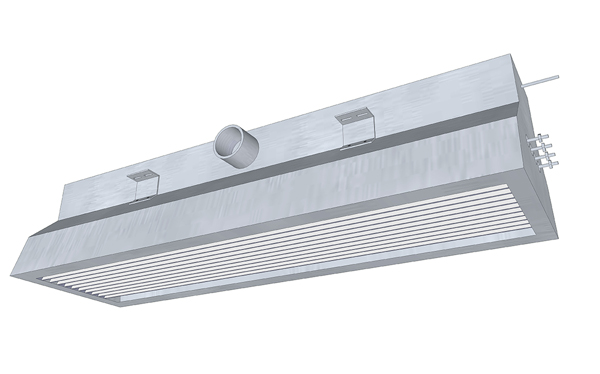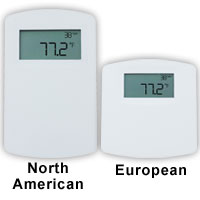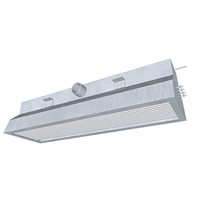 The primary goal of HVAC technology is to determine the most effective approach to heat/cool the interior of commercial sized buildings. One of the most effective ways of achieving this goal is through the use of chilled beam systems.
The primary goal of HVAC technology is to determine the most effective approach to heat/cool the interior of commercial sized buildings. One of the most effective ways of achieving this goal is through the use of chilled beam systems.
 Chilled beam systems are versatile in nature; they are capable of heating and cooling a large space simultaneously, at a superior level to alternative forced-air conveyance systems. Chilled beams circulate air throughout a room by running chilled water through a copper beam near the top of the ceiling. The water cools the surrounding air, forcing colder air to fall and warmer air to rise. This provides great air circulation throughout the building while remaining space efficient. Dwyer has recognized the potential that chilled beam systems bring to the HVAC marketplace and has incorporated varying features/benefits within their temperature and humidity lines to help aid the effectiveness of these systems.
Chilled beam systems are versatile in nature; they are capable of heating and cooling a large space simultaneously, at a superior level to alternative forced-air conveyance systems. Chilled beams circulate air throughout a room by running chilled water through a copper beam near the top of the ceiling. The water cools the surrounding air, forcing colder air to fall and warmer air to rise. This provides great air circulation throughout the building while remaining space efficient. Dwyer has recognized the potential that chilled beam systems bring to the HVAC marketplace and has incorporated varying features/benefits within their temperature and humidity lines to help aid the effectiveness of these systems.

Chilled beam systems can lose their effectiveness in extremely humid climates if they are not monitored appropriately. The water being supplied to the chilled pipes must be above the dew point of the surrounding air. If the water falls below the designated dew point, condensation will begin forming on the beam. This is a particularly concerning problem because, if left untreated, the condensation can cause significant damage to the building’s structure. Excessive leakage can block ducts, thus preventing the necessary amount of air from reaching the chilled beam to effectively cool the room. Additionally, the water might leak through the ceiling or walls and potentially damage property beneath it or make the space unsafe for living or working conditions.
![]() However, this issue can be combatted with the implementation of a dew point sensor. By effectively monitoring the ambient dew point of the surrounding air, it is possible to prevent chilled water from falling below the dew point. If the local dew point of the water begins to approach that of the ambient air, the sensor will transmit a signal to the system to start heating up the water. This ensures that the system will not condensate or cause damage to the building.
However, this issue can be combatted with the implementation of a dew point sensor. By effectively monitoring the ambient dew point of the surrounding air, it is possible to prevent chilled water from falling below the dew point. If the local dew point of the water begins to approach that of the ambient air, the sensor will transmit a signal to the system to start heating up the water. This ensures that the system will not condensate or cause damage to the building.

Dwyer Wall Mount Humidity/Temperature/Dew Point Transmitters (Series RHP-E/N and RHP-W) come standard with dew point calculation and output. By measuring the space humidity level and temperature level, in addition to using an equation based on the Magnus formula for determining dew point, these transmitters can provide usable scaled output signals to the building management system (BMS). The linear dew point signal from the RHP-E/N and RHP-W minimizes the number of inputs needed at the BMS as well as the time spent programming the BMS for dew point calculation based off of humidity and temperature readings. These 3-in-1 devices are offered with field selectable steady state output for both humidity and dew point, which can assist with keeping the dew point of the chilled beam low while also monitoring the humidity levels of nearby air. The RHP-E/N and RHP-W models offer a long-term reliable solution to ensuring safe humidity and dew point levels and preventing damage to the building’s infrastructure.

